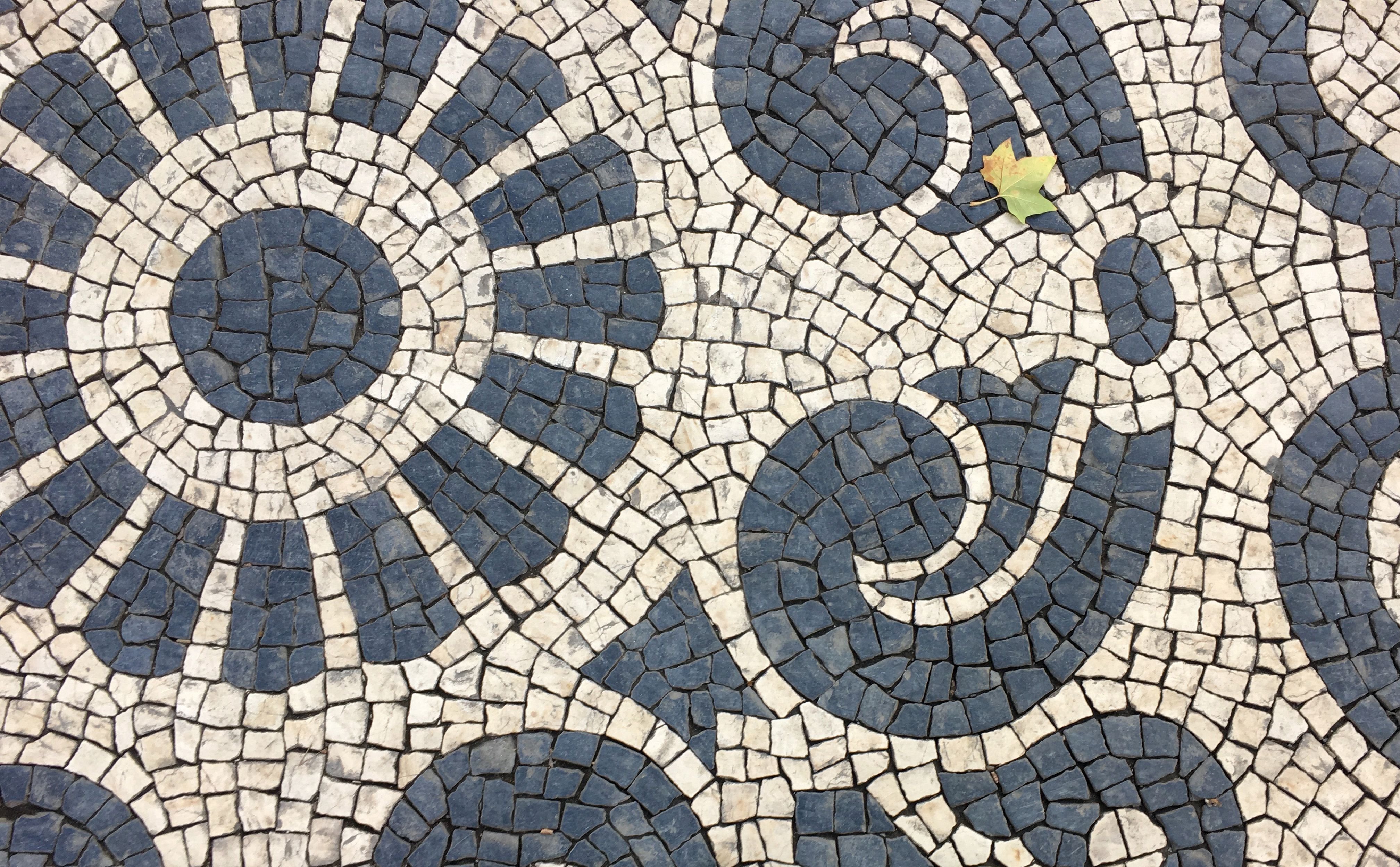
A Citywide Mosaic
The signature of Lisbon has to be the Portuguese pavement - Calçada Portuguesa - an art form that has celebrated sidewalks and plazas since the mid-19th century. This style is distributed uniquely throughout the city. The warm white and gray stones cluster around objects and public spaces all across Lisbon in different ways. My eyes were constantly glued to the ground, so in this series of photographs we're going to take a look at the intricacies of this citywide mosaic!








Identifying Streetscape Elements
The patterns here are functional too, it's not all about beauty. Lines demarcate changes in movement and speed of pedestrians. This technique helps alleviate bottlenecks and wayfinding in tight places. Here's an amazing example of pattern-work identifying a storefront, a high/low traffic zone and street edge (above). All of this takes place within the same palette of stones. There's a lot we can learn from this example in the USA. Concrete is quick and cheap but what does it add to the value of public realm? While mosaics are obviously labor intensive and expensive, they're also extremely resilient. They don't crack or buckle every season like concrete does. It's mostly a matter of climate (this would be a pain in the ass to shovel snow off of). But southern cities in the States have a lot to learn from Lisbon.

Celebrating Public Spaces
Are there ways we can enhance public spaces and celebrate sidewalks differently? Lisbon clearly has a language that makes it unique. As designers, we should challenge our cities to discover their own unique palette as well.
Coming up, I'll share an urban design project I worked on in Coral Gables, Florida. We used similar strategies of patternwork to identify spaces and curate the movement of pedestrians. Stay tuned :)

